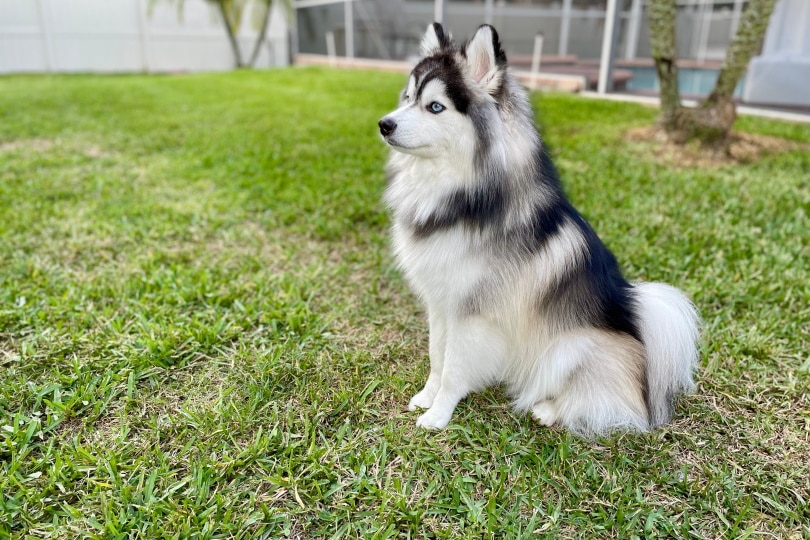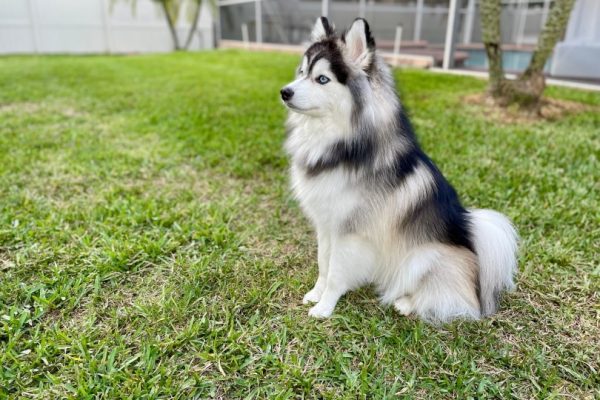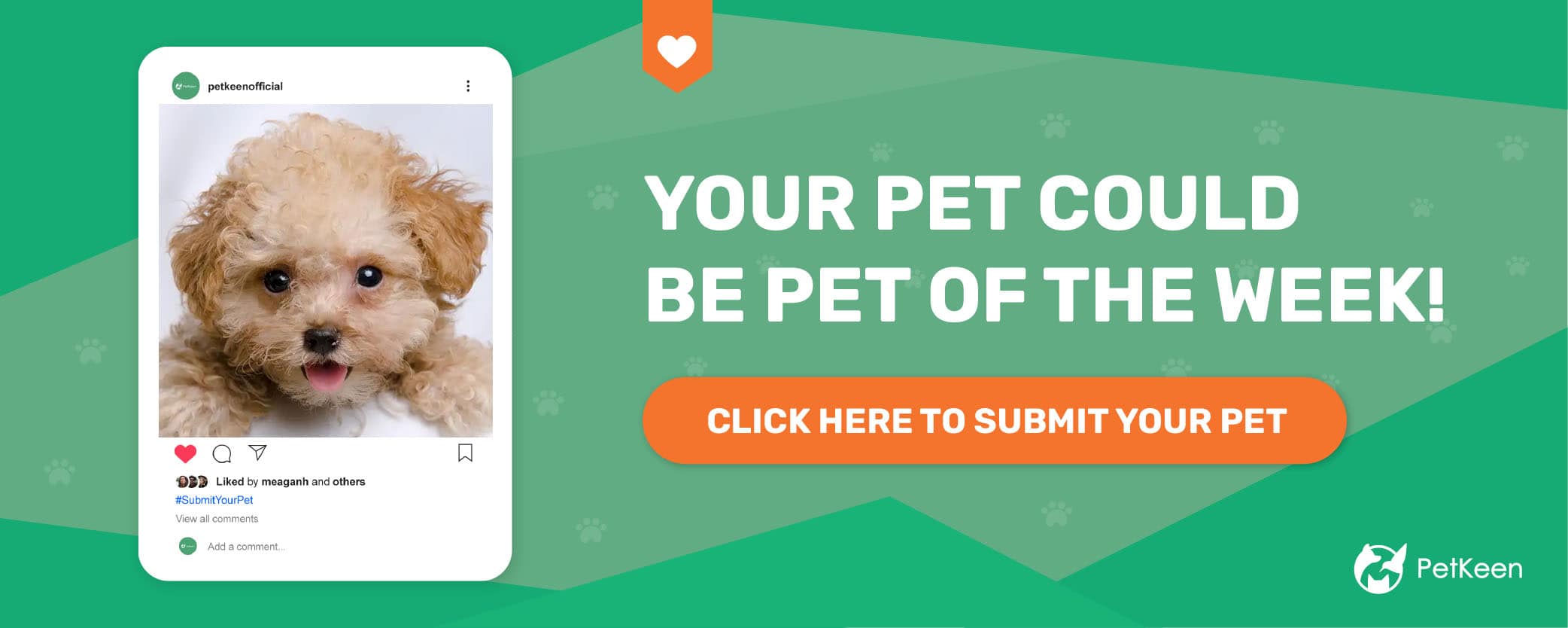Click Below to Skip Ahead
When it’s time to pick out a new puppy for your home, cuteness is definitely a factor in the decision-making process—and the Pomsky is an absolutely adorable little ball of fluff. A designer breed that’s a mix of the Pomeranian and the Husky, this small breed hasn’t been around long—only about 10 years or so. They’re rarer and may be harder to find, but for the right person, they can make a wonderful pet.
Breed Overview
Height
10-15 inches
Weight
20-30 pounds
Lifespan
12-15 years
Colors
Gray & white, white, brown, blue, red-brown, red & white, black & white, tan
Suitable for
Families with older children, people without kids, people without smaller pets
Temperament
Playful, intelligent, outgoing, affectionate
However, they aren’t always easy dogs to take care of, so you should know precisely what you’ll be getting into before buying one. Cuteness may come into play when you’re picking a dog, but it definitely shouldn’t be the only reason you get a specific breed. With the Pomsky, you need to be prepared to live with a highly active, incredibly loyal, fun-loving, stubborn, and vocal pup that will need plenty of attention.
Pomsky Puppies
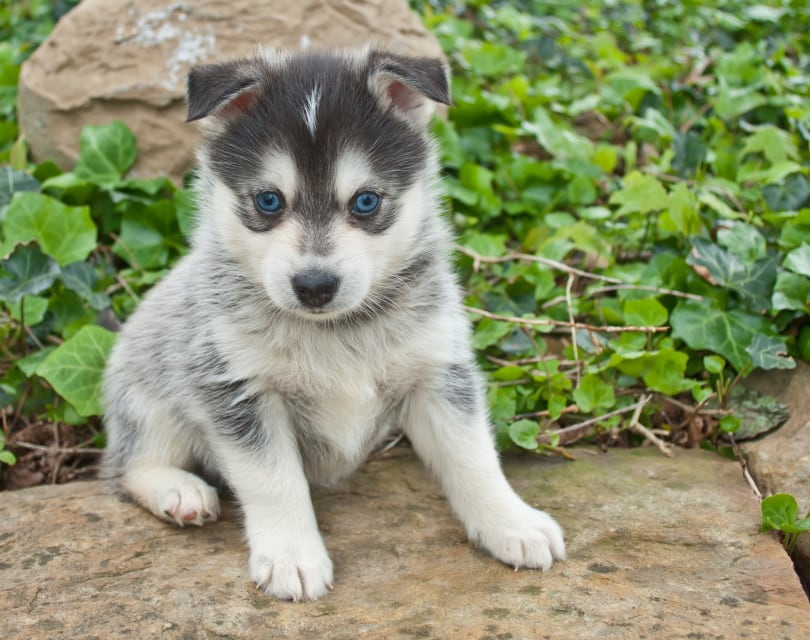
Pomskies are a designer breed, which makes them a rarer one. But the fact that they’re designer isn’t the only reason that they are rare. Because of the size difference between Huskies and Pomeranians, breeding them naturally is dangerous, which means artificial insemination is often used. That means you can expect to pay a hefty price . When purchasing from a breeder, make sure you’re using a reputable one that has agreed to the International Pomsky Association’s Code of Ethics. And you’ll want to be wary of any breeders who advertise teacup Pomskies—not only can the process of breeding these be unethical, but tiny dogs such as teacups often have more health issues.
There’s a chance you could find one at a shelter near you (though for an unfortunate reason). Many people aren’t prepared for the vocalness of this breed and get rid of them. You might find one at a rescue because of this too. When you find a Pomsky, take into consideration the energy and time they need to be entertained and cared for to grow into happy and healthy dogs.
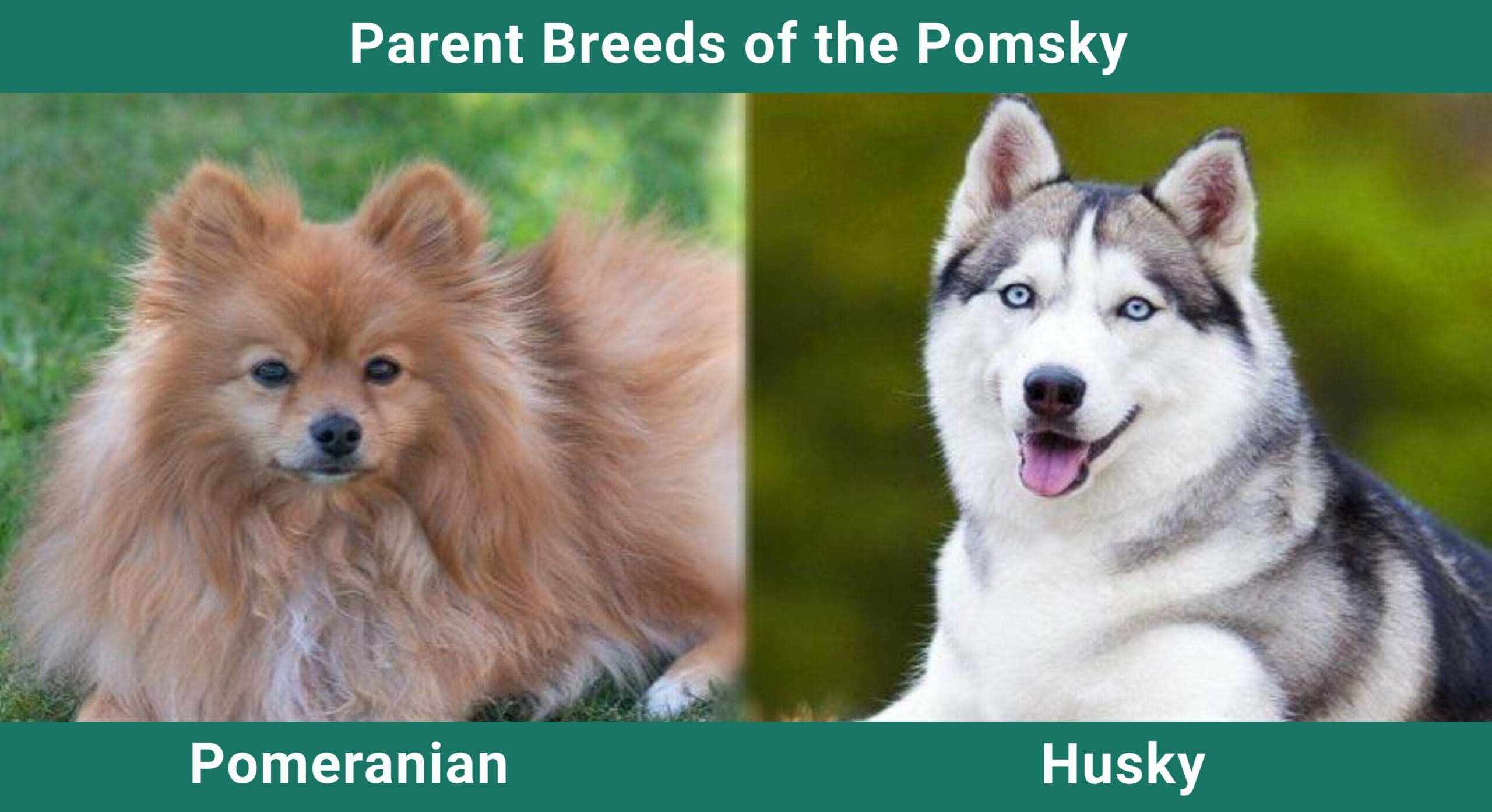
Temperament & Intelligence of the Pomsky
The Pomsky is an intelligent and active breed that needs plenty of playtime and attention. They love to have fun and can be a bit of a comedian at times. This breed is also one of the more vocal ones—they will yap and bark a lot, so they may not be the best pet if you live in an apartment complex with neighbors who will get easily annoyed.
This breed also has a wide stubborn streak and will prefer to do things their way. You’ll have to spend much time training them out of this. They’re incredibly loyal, though. And, while they will love everyone in the family, they’ll most likely latch onto one more than the rest, making them their person. However, the Pomsky can be very wary of strangers, so you’ll need to socialize them early on. Otherwise, they could end up constantly barking at new people.
Because of their smarts, Pomskies can become bored quickly. If they aren’t being active or mentally stimulated enough, they could turn into a tiny chaotic ball of destruction. They can also sometimes have separation anxiety, so if you’re away from home a lot, this breed probably won’t be a great match.
Are These Dogs Good for Families?
When it comes to Pomskies and small children, they aren’t a great fit. Pomskies can be very skittish around little ones who don’t know not to pull an ear or tail, and they can nip if they feel threatened. Plus, tiny kids running around could activate their prey drive. However, you should be fine if you have older children who know how to handle small dogs properly.
Does This Breed Get Along with Other Pets?
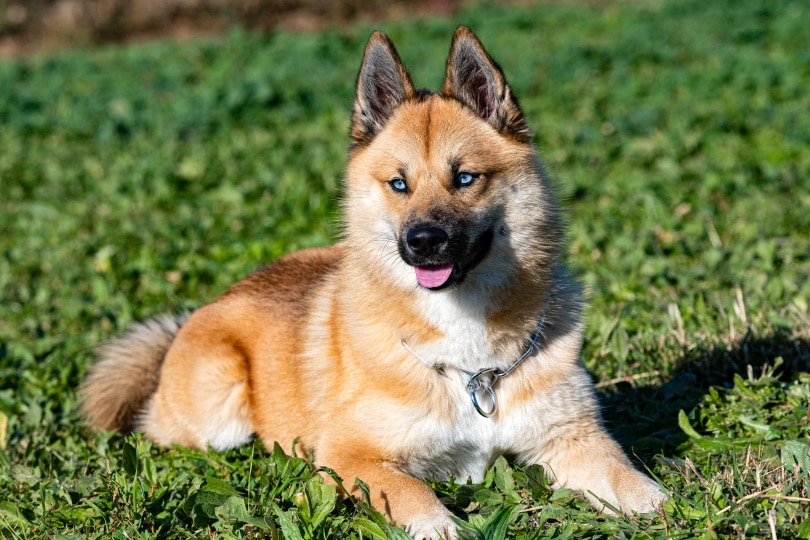
Unfortunately, Pomskies and other animals don’t always mix well either. This breed has a high prey drive inherited from their Husky parent, which means smaller animals such as cats or guinea pigs may not be safe around them. When it comes to other dogs, it’s really a toss-up. If your Pomsky is properly socialized early on, they can learn to get along.
Things to Know When Owning a Pomsky:
Getting a new pet means you need to gain a lot of new knowledge, so you know how to care for it properly. When it comes to the Pomsky, you should be prepared for plenty of energy, a need for playtime, and many hours of training so they can learn puppy manners and how to be friendly to all. You’ll need to know what and how much to feed them, plus how to take care of their coats, nails, and teeth. And you’ll need to know about potential health concerns that could arise down the road.
Food & Diet Requirements
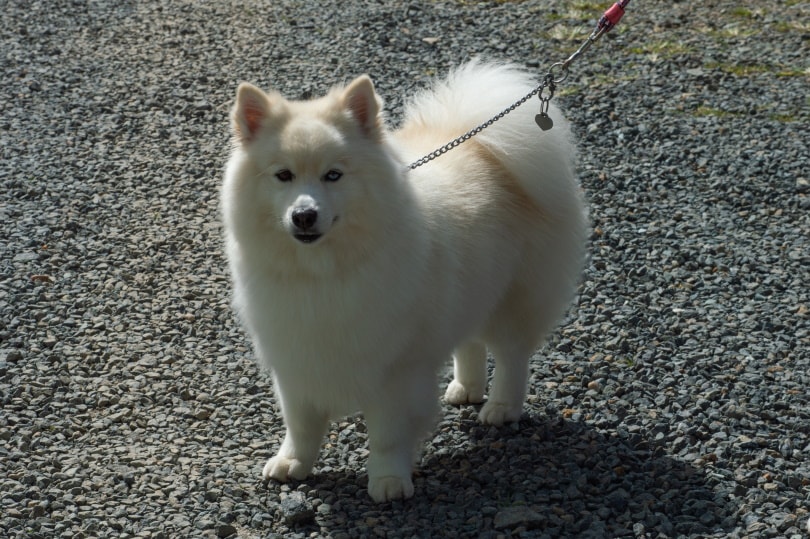
Because the Pomsky is a small breed, it will likely do well on dry dog food formulated for smaller dogs. The Pomsky Owners Association recommends a food that is high in protein and made for high-energy dogs. Your pup will probably only need around 2 to 2 1/2 cups of food a day, spread out over a couple of meals. You may also want to indulge them in dental treats occasionally, as they are prone to dental issues.
Because this breed is still so new, there aren’t actual standards on what to feed them. The best way to decide if you’re unsure is to speak to your vet.
Exercise
Pomskies have a lot of energy, but since they’re a smaller breed, they won’t need as much exercise as, say, their Husky parent would. They’ll only need about 45 minutes a day of activity, and you’ll find this breed will be less fond of walks and more fond of playing in the backyard. They should engage in short walks each day to stay healthy (walks on a leash as their prey drive could cause them to bolt after squirrels and other small animals).
This breed loves to play, and they’ll want to play with you constantly. So, make sure you have a plethora of toys around to satisfy this urge and are willing to put aside the time to play with them. You’ll likely want to have a few puzzle toys around to help keep your dog entertained when you aren’t home. Because of their intelligent natures, boredom in the Pomsky can lead to destructive behavior.
Training
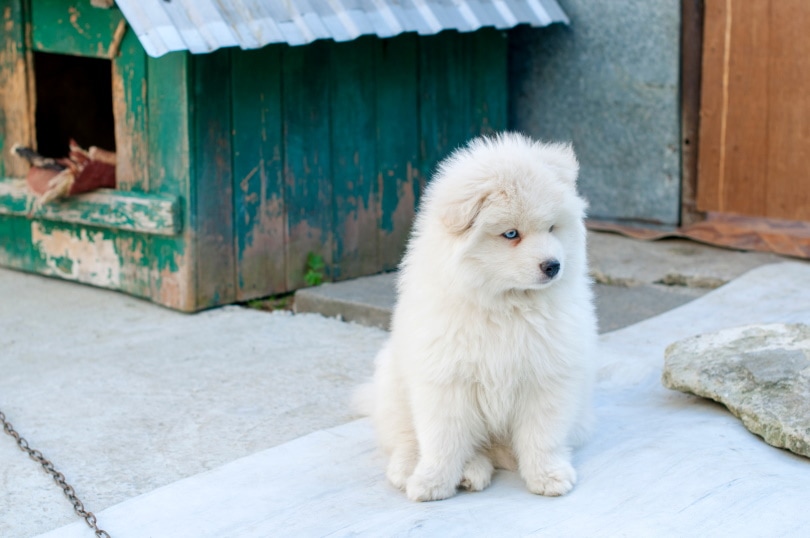
The good news is that Pomskies are very bright dogs. The bad news? They’ve also inherited a lot of stubborn willfulness from both of their parents. This independent streak, plus their high energy, can make training them a bit of a challenge. You’ll need to be prepared to have plenty of patience (and lots of time) to train these pups. You’ll also need to be sure to assert yourself as the alpha. Otherwise, your dog will be sure to manipulate any weakness you might have so they can get their way.
The Pomsky Owners Association recommends starting with short training sessions—10 to 15 minutes each—so your pet doesn’t get bored. You’ll also want to stick with positive reinforcement such as treats and praise; this breed won’t respond well to yelling. And you need to start training as soon as you get your new dog.
This breed needs early socialization to learn how to be around children and other people. They can grow up to be distrustful of strangers if you’re not careful. They also need to learn how to be around other animals. Pomskies often have a high prey drive because of their Husky side, which means they’ll have trouble around smaller animals, like cats, unless their instincts are tamed.
If you feel like you aren’t up to the task of training your Pomsky, you can reach out to a good trainer in your area to give you a helping hand.
Grooming✂️
Pomskies inherit their coats depending on which parent they take after more. Unfortunately, both of their parents have pretty high-maintenance coats. The Husky has a double coat that can shed like crazy, and the Pomsky tends to have the same. Pomeranians, meanwhile, have coats that are prone to matting. This means lots of brushing to keep coats nice and neat (and to try to cut down on shedding!)—usually daily.
Other than the daily brushing, you’ll need to bathe them around once a month (unless they get super dirty) to keep their coat looking nice. Their coats may get a bit overwhelming, so you might find it easier to have a groomer bathe them (and occasionally trim their hair).
Finally, clip their nails once a month and brush their teeth daily as this breed tends to have dental issues.
Health and Conditions
All animals will be predisposed to specific health conditions, but this is especially true with designer breeds. You’ll find that the Pomsky has inherited predispositions to illnesses that affect their parents, the Pomeranian and the Husky. However, because this breed is also so new, there may be health issues that appear in them further down the road.
- Dental issues
- Luxating Patella
 Male vs Female
Male vs Female
There really is no difference between the genders when it comes to the Pomsky. Males and females will reach approximately the same height and weight (there may be a couple of inches or pounds difference). And their personalities will have the same characteristics, regardless. So, it just comes down to your personal preference when choosing between the two.
3 Little-Known Facts About the Pomsky
1. Pomskies (at least partially) exist because of a Buzzfeed article.
No, really! Back in 2011, an article posted on Buzzfeed claimed the pictures within were of Pomskies (they were actually Finnish Lapphunds). The article went viral, sparking demand for the breed.
2. The Pomsky is used as a service dog.
And it’s recognized by the official U.S. Support And Service Animal Registration.
3. The AKC doesn’t recognize Pomskies.
But it’s okay because they get their very own club, the Pomsky Club of America.
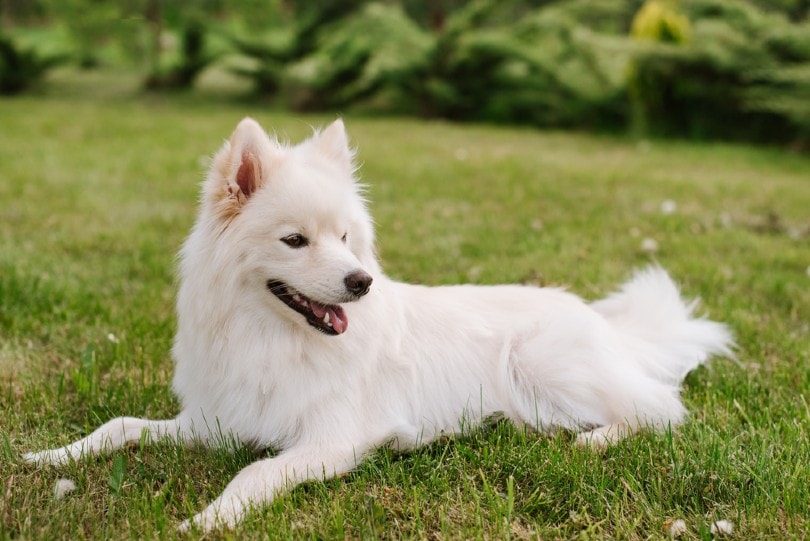
Conclusion
The Pomsky can be a fantastic pet; you just need to be sure that you’re a good fit for it. This breed is best for those without small children or those who don’t have close neighbors who will be annoyed by a vocal pup. Also, keep in mind that you’ll need to dedicate a lot of time and attention to it, as they love to play and will want to be around their people. If you think the Pomsky would make a wonderful addition to your household, you might find the search for one taking a bit of time since they’re a rarer breed. You’ll also need to be prepared to possibly pay a hefty price. But, if you take the plunge, you can be assured you’ll be getting an adorable new companion that is loyal and affectionate.
See Also:
- Vizsla Husky Mix: Care Guide, Pictures, Info, Traits, & More
- Pomsky vs Pomeranian: Key Differences (With Pictures)
Featured Image Credit: AmberLH, Shutterstock

